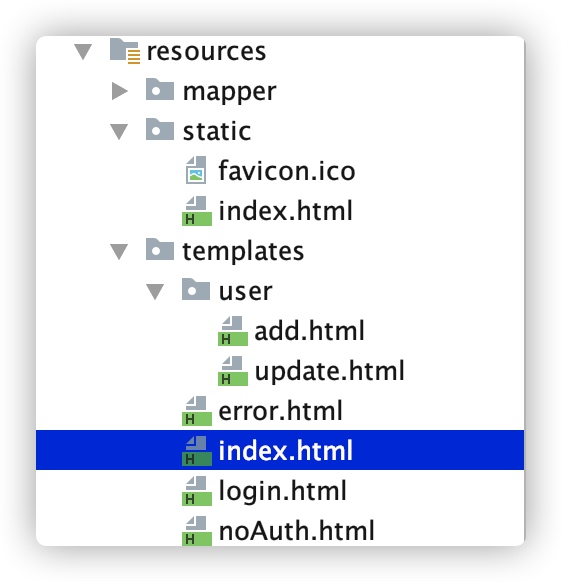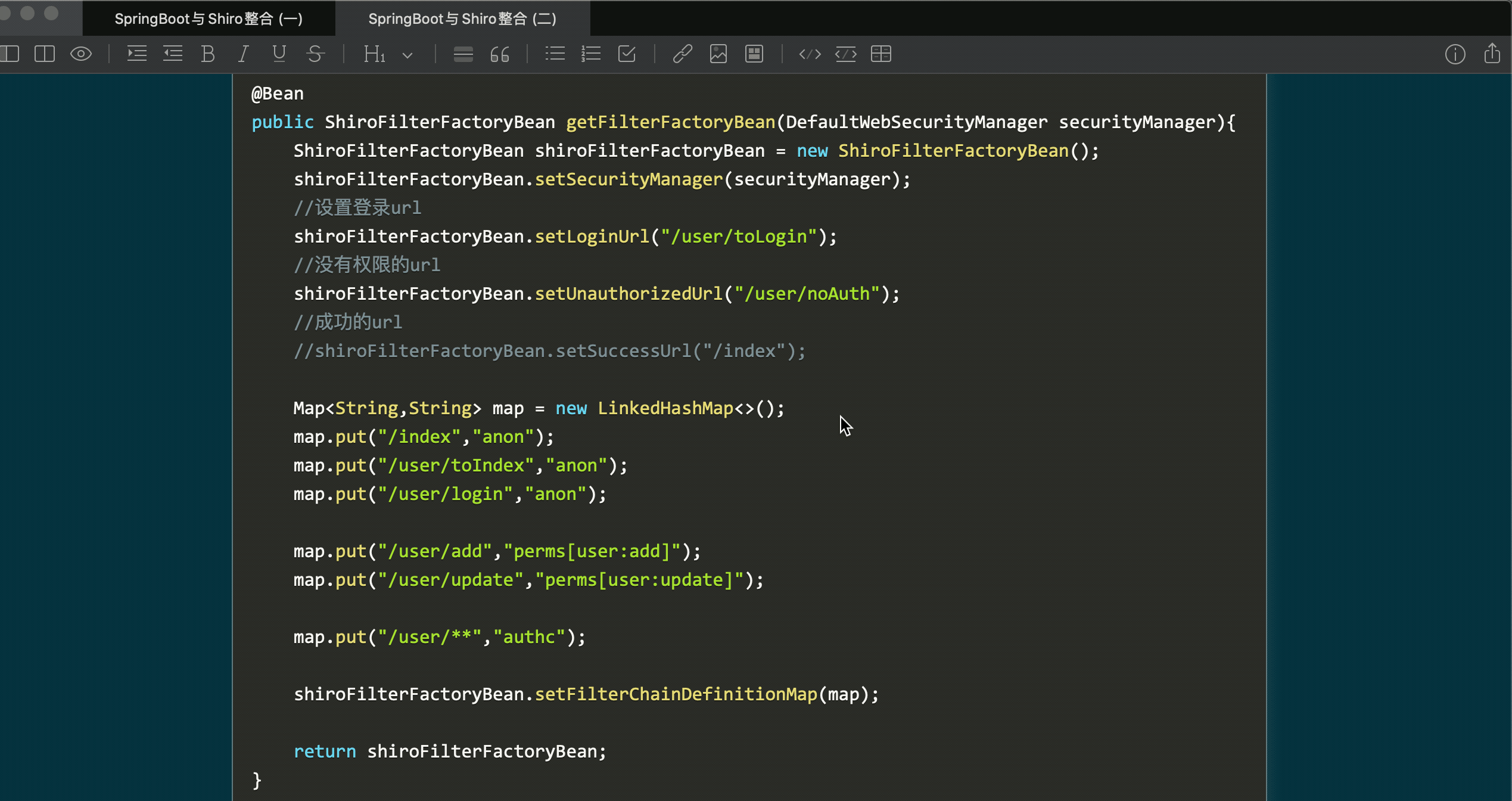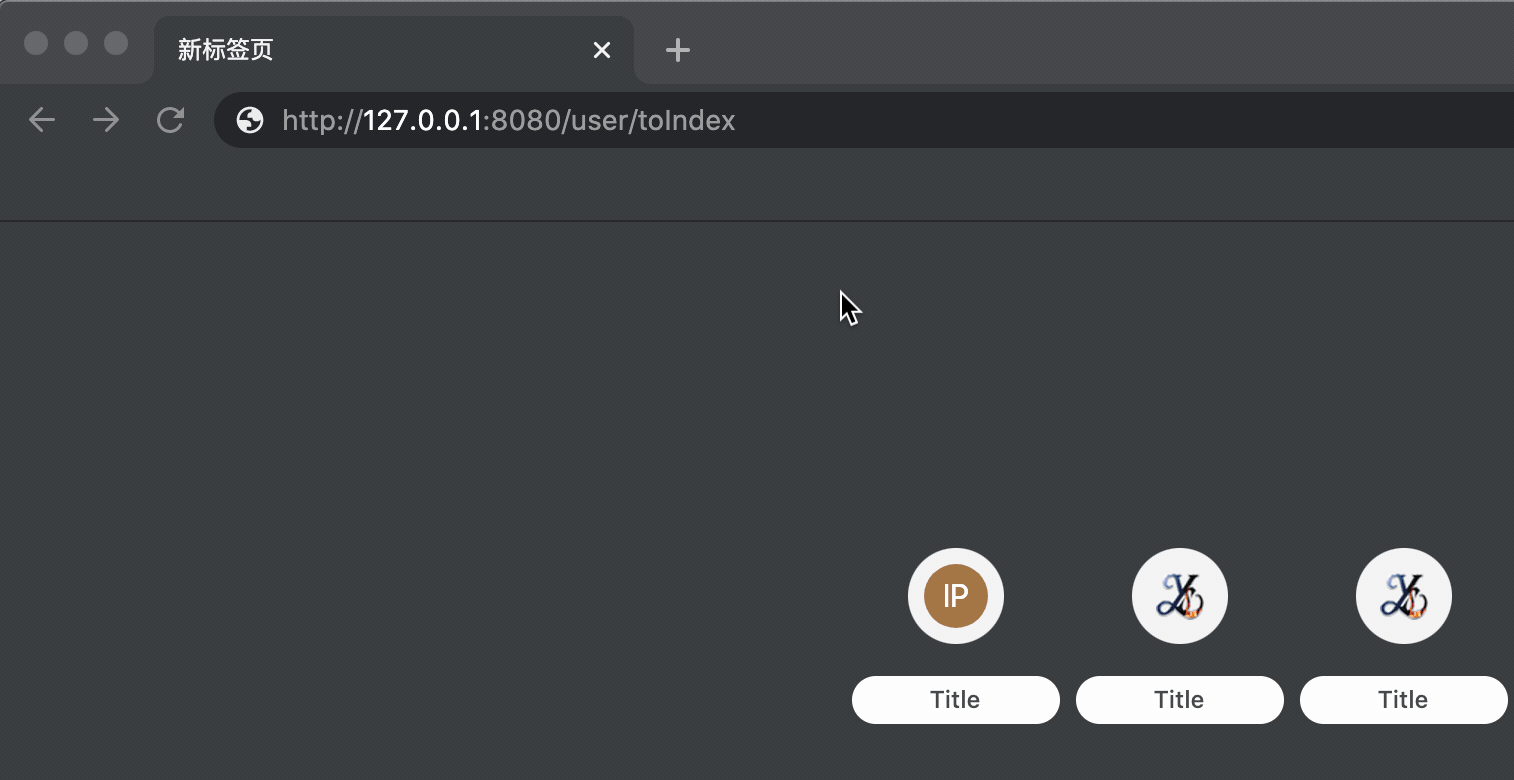SpringBoot与Shiro整合 (二)
六、加入mybatis
继续改进代码,之前只是在UserRealm中写了一些模拟数据,那么接下来,就从数据库中读取数据,这里使用mybatis-plus
User实体
@Data
@EqualsAndHashCode(callSuper = true)
@TableName("t_user")
@ApiModel(value = "用户pojo对象",description = "这是用户对象 ")
public class User extends Model{
private static final long serialVersionUID = 1L;
@ApiModelProperty("用户主键id")
@TableId(value = "user_pkid", type = IdType.AUTO)
private Integer userPkid;
@ApiModelProperty("用户注册名")
private String username;
@ApiModelProperty("用户密码")
private String password;
@ApiModelProperty("用户昵称")
private String nickname;
@ApiModelProperty("注册时间")
private LocalDateTime regTime;
@ApiModelProperty(hidden = true)//hidden = true 不在api文档中显示
private Integer fkDetailId;
@ApiModelProperty(hidden = true)
private Integer fkDeptId;
@ApiModelProperty(hidden = true)
@TableLogic
private Integer deleted;
}
UserMapper
@Repository
public interface UserMapper extends BaseMapper<User> {
}
IUserService
public interface IUserService extends IService<User> {
User findUserByUsername(String username);
}
UserServiceImpl
@Service
public class UserServiceImpl extends ServiceImpl<UserMapper, User> implements IUserService {
@Autowired
private UserMapper userMapper;
@Override
public User findUserByUsername(String username) {
QueryWrapper<User> queryWrapper = new QueryWrapper<>();
queryWrapper.eq("username",username);
User user = userMapper.selectOne(queryWrapper);
return user;
}
}
修改UserRealm
public class UserRealm extends AuthorizingRealm {
@Override
protected AuthorizationInfo doGetAuthorizationInfo(PrincipalCollection principalCollection) {
System.out.println("执行授权逻辑");
return null;
}
@Autowired
private IUserService userService;
@Override
protected AuthenticationInfo doGetAuthenticationInfo(AuthenticationToken authenticationToken) throws AuthenticationException {
System.out.println("执行认证逻辑");
UsernamePasswordToken token = (UsernamePasswordToken)authenticationToken;
User user = userService.findUserByUsername(token.getUsername());
if(user == null){
return null;
}
return new SimpleAuthenticationInfo(user,user.getPassword(),"");
}
}
现在修改的比较简单,只是从之前的假数据,改成了从数据库中读取而已。其他的基本没做变化,打开页面再做测试就是直接从数据库中读取数据了
为了在页面看到session中的效果,将index.html页面再添加一个thymeleaf的实现
<!DOCTYPE html>
<html lang="en" xmlns:th="http://www.thymeleaf.org">
<head>
<meta charset="UTF-8">
<title>Title</title>
</head>
<span th:text="|欢迎你:${session.user==null ? '' :session.user.nickname}|">登录</span> <br>
<body>
进入用户新增页面 <a href="/user/add">用户新增</a>
<br><br>
进入用户更新页面 <a href="/user/update">用户更新</a>
</body>
</html>
位置如下:

这样的话,为了能够访问到这个页面,Controller和ShiroConfig文件中都需要进行修改 Controller
@RequestMapping("/toIndex")
public String toIndex(){
return "index";
}
ShiroConfig
@Bean
public ShiroFilterFactoryBean getFilterFactoryBean(DefaultWebSecurityManager securityManager){
ShiroFilterFactoryBean shiroFilterFactoryBean = new ShiroFilterFactoryBean();
shiroFilterFactoryBean.setSecurityManager(securityManager);
//设置登录url
shiroFilterFactoryBean.setLoginUrl("/user/toLogin");
Map<String,String> map = new LinkedHashMap<>();
map.put("/index","anon");
map.put("/user/toIndex","anon");
map.put("/user/login","anon");
map.put("/user/**","authc");
shiroFilterFactoryBean.setFilterChainDefinitionMap(map);
return shiroFilterFactoryBean;
}
前台index要获取到Session,那么我们需要将保存到Subject中的数据放入到HttpSession中才能直接读取,所以,还需要将后台UserRealm再做修改
@Override
protected AuthenticationInfo doGetAuthenticationInfo(AuthenticationToken authenticationToken) throws AuthenticationException {
System.out.println("执行认证逻辑");
//1、判断用户名,token中的用户信息时登录的时候传进来的
UsernamePasswordToken token = (UsernamePasswordToken)authenticationToken;
User user = userService.findUserByUsername(token.getUsername());
if(user == null){
return null;//返回null,shiro底层会抛出UnknownAccountException
}
SimpleAuthenticationInfo authcInfo = new SimpleAuthenticationInfo(user, user.getPassword(), this.getName());
//清缓存中的授权信息,保证每次登陆 都可以重新授权。因为AuthorizingRealm会先检查缓存有没有 授权信息,再调用授权方法
super.clearCachedAuthorizationInfo(authcInfo.getPrincipals());
//从Subject中获取到Session把对象保存到session中
SecurityUtils.getSubject().getSession().setAttribute("user",user);
return authcInfo;
}
当然,如果你不想再将Subject中的数据再取出来,再放入到session中,可以使用thymeleaf和shiro的整合
七、thymeleaf和shiro的整合
1、导入thymeleaf对shiro的扩展坐标
<!-- 导入thymeleaf对shiro的扩展坐标 -->
<dependency>
<groupId>com.github.theborakompanioni</groupId>
<artifactId>thymeleaf-extras-shiro</artifactId>
<version>2.0.0</version>
</dependency>
2、配置ShiroDialect
在ShiroConfig中加入
@Bean
public ShiroDialect getShiroDialect(){
return new ShiroDialect();
}
3、页面使用
<!DOCTYPE html>
<html lang="en" xmlns:th="http://www.thymeleaf.org" xmlns:shiro="http://www.pollix.at/thymeleaf/shiro">
<head>
<meta charset="UTF-8">
<title>Title</title>
</head>
<body>
<p shiro:guest="">
Please <a href="login.html">Login</a>
</p>
<p shiro:user="">
Welcome back <shiro:principal property="nickname" />!
</p>
<br>
欢迎你:<shiro:principal property="nickname" />
<br>
进入用户新增页面 <a href="/user/add">用户新增</a>
<br><br>
进入用户更新页面 <a href="/user/update">用户更新</a>
</body>
</html>
具体的一些页面shiro标签使用,可以参考https://github.com/theborakompanioni/thymeleaf-extras-shiro
八、shiro授权
上面的代码说到底,只是实现了用户登录认证,然后使用过滤器直接过滤登录成功跳转到哪里,不成功跳转到里,接下来就需要给用户授权
首先,没有某些权限的用户,应该就不能访问某些页面
添加没有权限需要跳转的noAuth页面
<!DOCTYPE html>
<html lang="en">
<head>
<meta charset="UTF-8">
<title>Title</title>
</head>
<body>
未经授权无法访问该页面
</body>
</html>
修改ShiroConfig文件,添加相关权限内容
@Bean
public ShiroFilterFactoryBean getFilterFactoryBean(DefaultWebSecurityManager securityManager){
ShiroFilterFactoryBean shiroFilterFactoryBean = new ShiroFilterFactoryBean();
shiroFilterFactoryBean.setSecurityManager(securityManager);
//设置登录url
shiroFilterFactoryBean.setLoginUrl("/user/toLogin");
//没有权限的url
shiroFilterFactoryBean.setUnauthorizedUrl("/user/noAuth");
//成功的url
//shiroFilterFactoryBean.setSuccessUrl("/index");
Map<String,String> map = new LinkedHashMap<>();
map.put("/index","anon");
map.put("/user/toIndex","anon");
map.put("/user/login","anon");
map.put("/user/add","perms[user:add]");
map.put("/user/update","perms[user:update]");
map.put("/user/**","authc");
shiroFilterFactoryBean.setFilterChainDefinitionMap(map);
return shiroFilterFactoryBean;
}
修改UserRealm文件,给当前用户添加了添加的权限,也就是可以直接访问/user/add路径的权限
@Override
protected AuthorizationInfo doGetAuthorizationInfo(PrincipalCollection principalCollection) {
System.out.println("==========执行授权逻辑==========");
SimpleAuthorizationInfo simpleAuthorizationInfo = new SimpleAuthorizationInfo();
simpleAuthorizationInfo.addStringPermission("user:add");
return simpleAuthorizationInfo;
}

不过实际上,直接在Config文件中配置perm[xxx]这种权限的方式一般都不会这么做,在配置过滤中,一般都只是会简单过滤anon和authc就可以了,类似于下面这样:
Map<String, String> filterMap = new LinkedHashMap<>();
filterMap.put("/webjars/**", "anon");
filterMap.put("/druid/**", "anon");
filterMap.put("/sys/login", "anon");
filterMap.put("/swagger/**", "anon");
filterMap.put("/js/**", "anon");
filterMap.put("/css/**", "anon");
filterMap.put("/imgs/**", "anon");
filterMap.put("/swagger-ui.html", "anon");
filterMap.put("/swagger-resources/**", "anon");
filterMap.put("/**", "auth");
至于其他的perm[xxx]这种过滤。一般都使用注解的配置,在ShiroConfig中加入注解配置
/**
* 开启aop注解支持
* 即在controller中使用 @RequiresPermissions("user:add")
*/
@Bean
public AuthorizationAttributeSourceAdvisor authorizationAttributeSourceAdvisor(DefaultWebSecurityManager securityManager){
AuthorizationAttributeSourceAdvisor attributeSourceAdvisor = new AuthorizationAttributeSourceAdvisor();
//设置安全管理器
attributeSourceAdvisor.setSecurityManager(securityManager);
return attributeSourceAdvisor;
}
@Bean
@ConditionalOnMissingBean
public DefaultAdvisorAutoProxyCreator defaultAdvisorAutoProxyCreator() {
DefaultAdvisorAutoProxyCreator defaultAAP = new DefaultAdvisorAutoProxyCreator();
defaultAAP.setProxyTargetClass(true);
return defaultAAP;
}
在相应的,需要有权限验证的Controller中加入注解@RequiresPermissions
@Controller
@RequestMapping("/user")
@Api(tags="用户相关操作接口")
public class UserController {
@RequestMapping("/add")
@RequiresPermissions("user:add")
public String add(){
return "user/add";
}
@RequestMapping("/update")
@RequiresPermissions("user:update")
public String update(){
return "user/update";
}
......
}
这样,就完成了注解的权限授权
不过,还有个bug,如果现在进入没有权限的页面,直接会报出异常,而不是跳转到我们之前设置好的noAuth页面
 Shiro注解模式下,登录失败与没有权限都是通过抛出异常。并且默认并没有去处理或者捕获这些异常。在SpringMVC下需要配置捕获相应异常来通知用户信息
Shiro注解模式下,登录失败与没有权限都是通过抛出异常。并且默认并没有去处理或者捕获这些异常。在SpringMVC下需要配置捕获相应异常来通知用户信息
要解决其实也很简单,直接自定义异常的捕获就好了,在ShiroConfig中加入注解:
@Bean
public SimpleMappingExceptionResolver simpleMappingExceptionResolver() {
SimpleMappingExceptionResolver resolver = new SimpleMappingExceptionResolver();
Properties properties = new Properties();
/*未授权处理页,注意这里直接跳转页面,不需要在经过Controller*/
properties.setProperty("org.apache.shiro.authz.UnauthorizedException", "noAuth");
resolver.setExceptionMappings(properties);
return resolver;
}
当然这么做的前提是你的代码里面没有设置全局异常处理的类,如果说代码中有全局异常处理的内容,还是会先按照处理异常
九、退出logout
退出可以直接调用Shiro的LoginoutFilter过滤器帮我们实现退出的功能,甚至不需要我们写任何代码,在LoginoutFilter.class类中已经帮我们处理好了相关session的处理甚至是页面的跳转
我们只需要在页面添加退出的标签和url地址,这个url地址都可以是不存在的,地址的作用只是为了让Filter进行过滤
<p shiro:user="">
Welcome back <shiro:principal property="nickname" />! <a th:href="@{/logout}">退出</a>
</p>
我们可以选择直接配置,和自己编写Controller代码,当然,一般都选择编写Controller代码,非常简单,只需要使用SecurityUtils.getSubject().logout();一句话,就能直接退出了
@RequestMapping("/logout")
public String logout(){
SecurityUtils.getSubject().logout();
return "index";
}
如果使用直接配置需要在后端过滤器的Map中,加入logout过滤
map.put("/logout","logout");
不过这么做在退出后,会自动跳转到项目的根目录,读一下LoginoutFilter.class源代码就知道原因了
LoginoutFilter.class
public static final String DEFAULT_REDIRECT_URL = "/";
private String redirectUrl = "/";
所以,如果想退出后,跳转到到我们定义的路径,只有重新设置redirectUrl的值,做法就是通过shiroFilterFactoryBean重新定义LoginoutFilter
...
LogoutFilter logoutFilter = new LogoutFilter();
logoutFilter.setRedirectUrl("/user/toIndex");
Map<String, Filter> filters = shiroFilterFactoryBean.getFilters();
filters.put("logout",logoutFilter);
map.put("/logout","logout");
...

Comments